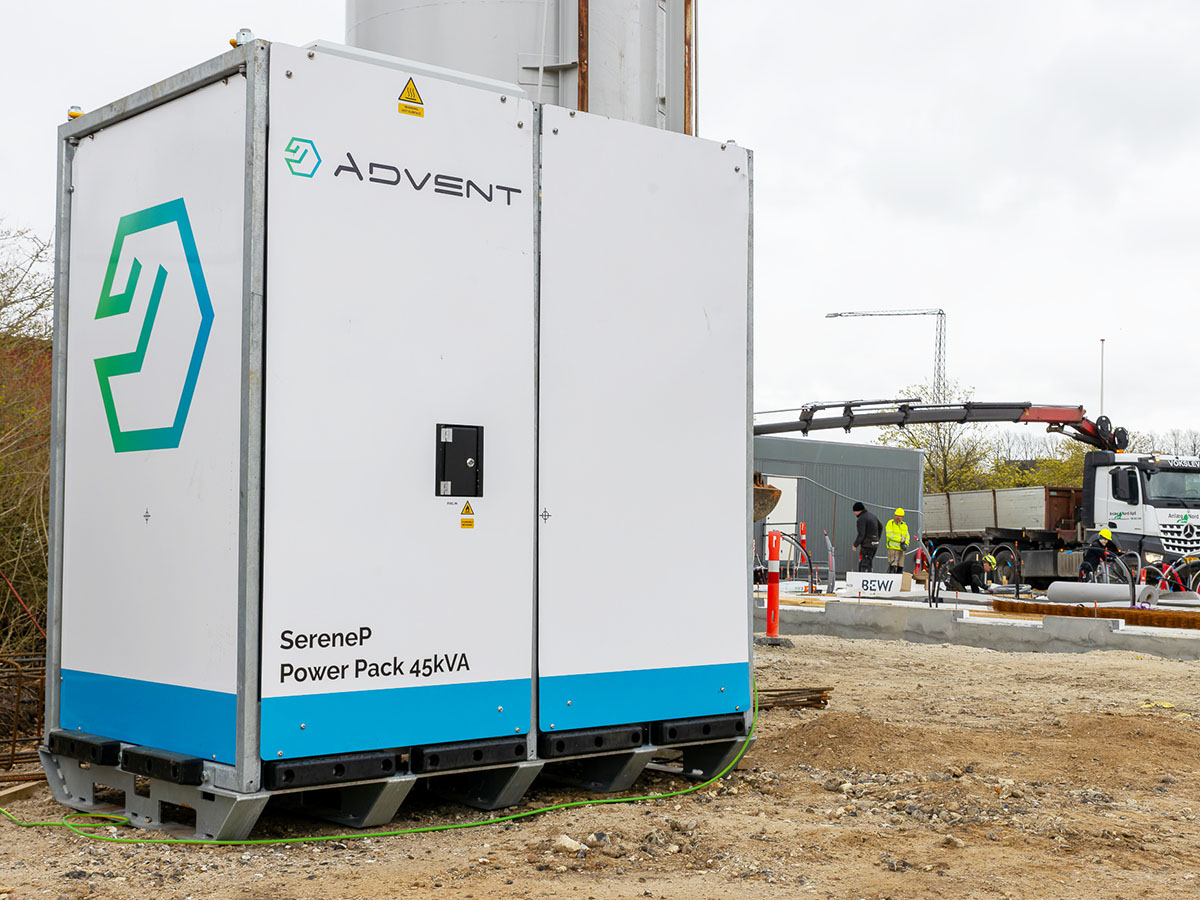Gone are the diesel fumes and noise. Instead, the power comes from a generator running on fuel cells and methanol.
At a construction site in Nørresundby, the aim is to reduce CO2 and harmful particle emissions in connection with the construction of a new health center. The vehicles on the construction site are electric, and the power comes from a green generator developed by Advent Technologies A/S in collaboration with Elektro Gruppen.
– The generator has removed noise from the construction site. This means we can talk to each other during the day, which is good for both the work environment and safety. There have been no technical challenges with it, which is important because on a construction site there can be a barrier to trying something new. But the green generator just integrates into everyday life without drawing attention to itself – apart from providing green energy, says project manager Christian Bundgaard Nielsen from the construction company HP Byg.
Green solution independent of weather conditions
Construction sites depend on power, and traditionally it is supplied by a generator running on diesel, which is quite noisy. Like all other industries, construction needs to reduce its CO2 footprint and harmful particle emissions, and since many construction sites are located in urban areas, it makes extra sense to switch to technologies that do not pollute the local environment or make noise.
In December 2023, 14 developers signed a declaration of intent to strive for green construction sites in Denmark. Now, AaK buildings, which is the developer of the new health center in Aalborg, has brought that vision to life.
But the dependency on energy supply calls for new sustainable solutions that can deliver both stably and profitably. Solar cells and batteries are beginning to emerge as possible power sources on construction sites, but the green generator, based on fuel cells and methanol, has the advantage of being compact to transport and operate, in addition to its efficiency and logistical advantages, and it is also independent of weather conditions.
Methanol can be produced based on hydrogen and CO2, and if the hydrogen is produced using electricity from wind or solar, and the CO2 is captured and thus “recycled,” then methanol is a good alternative to diesel. Methanol is liquid, takes up little space, can be stored in tanks, and is just as easy to handle as fossil fuels. If methanol is filled into a generator equipped with fuel cells instead of a combustion engine, the electricity is produced not only without harmful particle emissions and low CO2 emissions but also operates with minimal vibration and significantly reduced noise.
Festivals also need green generators
The green generator is not only an interesting alternative on construction sites. At festivals and other events, diesel generators are also used extensively. The use and spread of the green generator are part of the North Jutland lighthouse project CO2Vision, where, with support from the EU, there is a focus on the capture, use, and storage of CO2.
– The green generator has great potential. There are many possible applications, such as cultural events and construction sites, and we have an energy technology here that can be scaled up in volume, says project manager Maria Kristensen from Energy Cluster Denmark, who is helping to facilitate the CO2Vision project.
During the summer, you will be able to meet the green generator at a number of events, including Grøn Koncert, Smukfest, and Aalborg Regatta. Grøn Koncert, Smukfest, and Aalborg Regatta.


